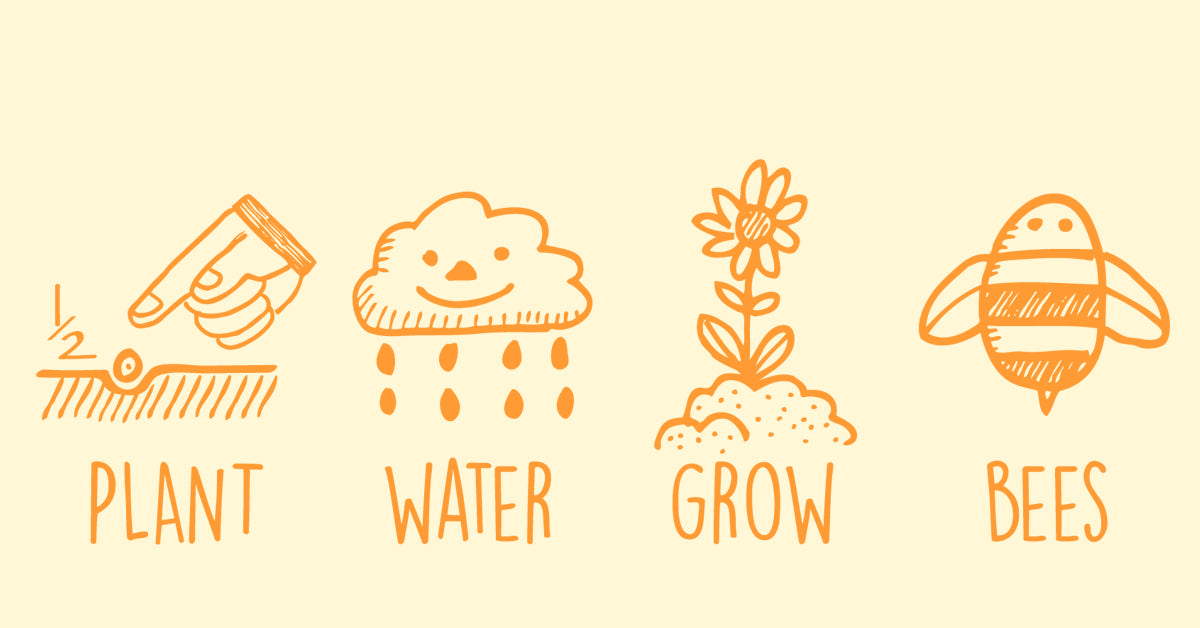Your Cart is Empty

Do you get happy watching long stretches of colorful flowers swaying in the cool breeze? Don’t the hovering butterflies and honey bees add to the varied hues? If yes, then think about planting more wildflowers in your area! You will find no greater happiness than when they come to full bloom. That is the time when they spread a vast blanket of vibrant color before you.
In areas with cold climates, the ideal planting time is when all threats of frosts are over. However, you can undertake wildflower planting in early spring in areas with warmer climates. Next is choosing the planting site. A site that is warmed by sun rays for at least six hours in the day is an ideal location. Wildflowers can be planted in your lawn area or for marking boundaries or on any open space in your field or yard that can be viewed easily from the house.
Wildflower seed bombs are better than seeds as being nutrient-rich they give the plants a head start to grow. Before using them, all unwanted plants, grass, and weeds have to be removed from the area of planting so that there is space for wildflowers to thrive. If other root structures in the soil are pulled out, then germination will be faster and the wildflower plants will grow healthier. You can use the tiller and hand-tools; organic weed killers or plastic sheets for smothering the weeds off. The choice of technique depends upon the time at your disposal. In case of planting wildflower seed bombs, it is not necessary to fertilize before seeding. Each seed bomb is a combination of seed, peat-free compost and clay.
Keeping in mind a few points will give a boost to your wildflower planting. Ensure that it is not very sunny while scattering as then the seedbed will dry up right away. It is perfectly fine to do your planting before night time and water the seedbed early in the morning. As the seedlings begin to grow, it is essential to water them at regular intervals till they are about 4-6 inches in height. Planting under regular rains is also a good idea as then Mother Nature takes care of the watering.
The important point to keep in mind is not to sow the seed bombs too densely. Space has to be given to the seedlings to grow well without strangling one another. Try to choose a day when there are no high winds. There is no great technique to observe when sowing or scattering your seed bombs. Scatter the mixture containing the seed bombs with your hand on the area you have chosen. In case your chosen area is grassy, then it is wise to take away a top-soil layer before sowing the seed bombs.
The seed bombs can flourish even in planters. You load pots and planters with compost and soil, and grow your wildflower garden in them.
The number of seed bombs needed to depend upon your coverage area. A square meter will need about twenty seed bombs while about 5-6 seed bombs will suffice for a small pot. Larger pots will need about 12 or so of them. As you become familiar with planting seed bombs, you will be able to decide the quantity well. A point to be remembered is that the seed bombs should not be broken. Germination occurs after the clay is permeated with water. Seed bombs that have been scattered should be left untouched once it has rained.
Keep the planted area moist with a mild spray throughout the growth period. If the seedbed looks dried, water it to ensure that the topsoil is moistened. Watering will hasten the germination process.
If you are regular with your watering then you can begin to see sprouts in a matter of seven to fifteen days or so. However, flowering takes time. Some species will flower in the first year while some will do so only from the second year onwards.
However, patience is definitely rewarded and you will have your beautiful wildflower meadow ready maybe not very early but definitely soon!
Image Sources:
https://pixabay.com/en/green-landscape-tree-nature-soil-973596/
https://growtherainbow.com/collections/products/products/wildflower-seed-balls-gift-set-party-favor?variant=946425727
Comments will be approved before showing up.
Cristi Beehn
October 05, 2021
so excited to expand our pollinators garden. what began as a Monarch butterfly has turned into a Gulf Fritillary , Longtail, honey Bee garden.
Monarchs will stop in on their migration south but till they get here, Mother Nature has brought so many lovely little fly bys.